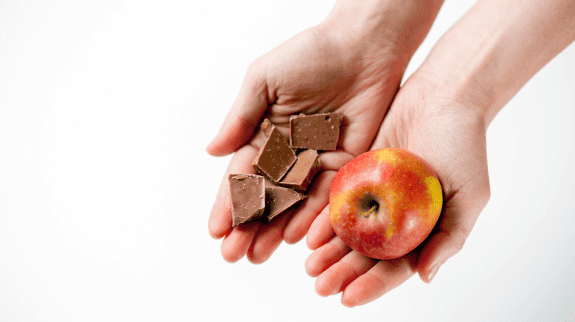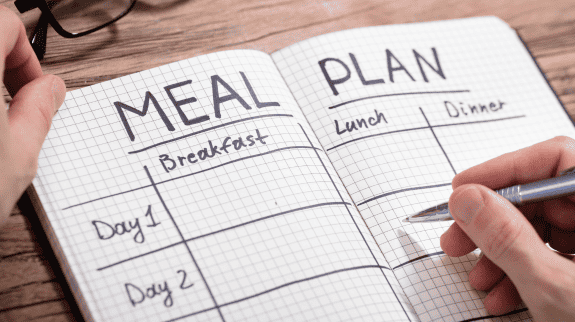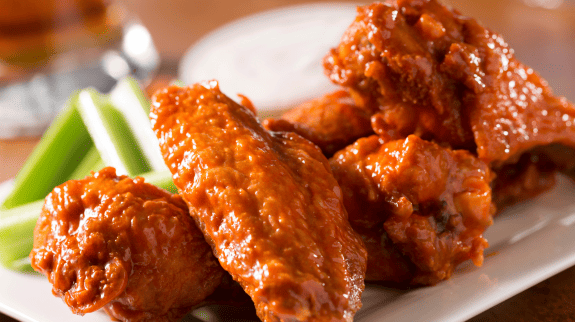Losing weight can be a daunting task, especially when you’re not a fan of healthy food. The thought of giving up your favorite snacks and meals can be discouraging, but it doesn’t have to be that way. There are plenty of ways to lose weight without having to compromise on your taste buds though.
Understanding the basics of weight loss is crucial. It’s not just about cutting calories, but also about making sure you’re consuming the right nutrients. Eating healthy doesn’t have to mean boring salads and steamed vegetables. There are plenty of delicious and nutritious meals that can help you shed those extra pounds.
KEY TAKEAWAYS
- Understanding the basics of weight loss is crucial.
- Eating healthy doesn’t have to mean boring food.
- Sustainable changes over time can lead to long-term success.
How to Lose Weight When You Hate Healthy Food?
For the purposes of this article, we are classifying healthy food as fruit and vegetables. There are plenty of people who hate these foods, and still manage to lose weight. Think of the Carnivore diet, a short term meat only diet that many people rave about which can provide some short term weight loss.
Also read: Carnivore Diet – What Is It?
Ultimately, losing weight primarily depends on creating a calorie deficit (more on that below). While fruits and vegetables are typically low in calories and high in nutrients, there are other foods you can include in your diet that can help you lose weight when consumed in moderation. Here are some options:
- Lean Proteins:
- Chicken breast
- Turkey breast
- Lean cuts of beef or pork
- Fish (such as salmon, tuna, or trout)
- Tofu
- Eggs (particularly egg whites)
- Whole Grains:
- Oats
- Brown rice
- Quinoa
- Whole wheat pasta
- Whole grain bread
- Barley
- Legumes:
- Lentils
- Chickpeas
- Black beans
- Kidney beans
- Peas
- Dairy and Dairy Alternatives (low-fat or non-fat):
- Greek yogurt
- Cottage cheese
- Skim milk
- Almond milk (unsweetened)
- Nuts and Seeds (in moderation):
- Almonds
- Walnuts
- Chia seeds
- Flaxseeds
- Healthy Fats (in moderation):
- Avocado
- Olive oil
- Coconut oil (sparingly)
- Fatty fish (like salmon, mackerel, and sardines)
- Low-Calorie Condiments and Flavorings:
- Herbs and spices
- Hot sauce
- Mustard
- Vinegar (e.g., balsamic or apple cider)
- Water and Low-Calorie Beverages:
- Water
- Unsweetened herbal tea
- Black coffee (without added sugar or high-calorie creamers)
Remember, portion control and mindful eating are crucial when trying to lose weight.
Understanding the Basics of Weight Loss
Calories and Energy Balance
Losing weight requires burning more calories than you consume. This is known as a calorie deficit. It’s important to understand that all foods have calories, and consuming too many calories can lead to weight gain. Even healthy foods can contribute to weight gain if consumed in excess.
Importance of Exercise

Exercise is an important component of weight loss. It helps to burn calories and increase muscle mass, which in turn increases metabolism and burns more calories even at rest. Aim for at least 30 minutes of moderate-intensity exercise per day, such as brisk walking, cycling, or swimming.
Strength training is also important for weight loss as it helps to build muscle mass, which burns more calories than fat. Incorporate strength training exercises into your workout routine at least twice per week.
In addition to exercise, it’s important to make healthy food choices. While it may be difficult to enjoy healthy foods if you hate them, there are ways to make them more palatable, such as adding spices and herbs for flavor. It’s also important to practice moderation and portion control when consuming less healthy foods.
Remember, weight loss is a gradual process and requires patience and consistency. By creating a calorie deficit through a combination of both dieting and exercise, you can achieve your weight loss goals.
Healthy Eating Doesn’t Mean Boring
Reframing Your Mindset

Many people associate healthy eating with bland, boring food. However, this doesn’t have to be the case. In fact, healthy eating can be delicious and satisfying. The key is to reframe your mindset and approach to food.
One way to do this is to focus on the benefits of healthy eating. Instead of thinking of it as a chore or restriction, think of it as a way to nourish your body and improve your overall health and well-being. When you start to view healthy food as a positive choice rather than a punishment, you may find that you enjoy it more.
Another approach is to experiment with new flavors and ingredients. Just because something is healthy doesn’t mean it has to be bland or boring. There are many ways to add flavor and variety to your meals, such as using fresh herbs and spices, trying new fruits and vegetables, and experimenting with different cooking methods.
Exploring Flavorful Healthy Options

There are many flavorful and healthy foods that you may not have tried before. Here are a few examples:
- Quinoa: This ancient grain is high in protein and fiber and has a nutty flavor. It can be used in salads, stir-fries, and even as a breakfast cereal.
- Sweet potatoes: These nutritious root vegetables are rich in vitamins and minerals and have a naturally sweet flavor. They can be roasted, mashed, or used in soups and stews.
- Avocado: This creamy fruit is high in healthy fats and can be used in a variety of dishes, such as guacamole, salads, and sandwiches.
- Greek yogurt: This thick and creamy yogurt is high in protein and can be used as a substitute for sour cream or mayonnaise in recipes.
- Dark chocolate: This indulgent treat is high in antioxidants and can satisfy your sweet tooth without derailing your healthy eating goals.
By incorporating these and other flavorful healthy options into your diet, you can enjoy delicious meals while still prioritizing your health.
Practical Strategies for Weight Loss
Losing weight can be challenging, especially if you don’t enjoy eating healthy foods. However, with the right strategies, you can still achieve your weight loss goals. Here are some practical strategies to help you lose weight even if you don’t like healthy food.
Portion Control

Portion control is a crucial aspect of weight loss. Even if you’re not eating healthy foods, you can still lose weight by controlling your portions. Here are some tips to help you with portion control:
- Use smaller plates: Using smaller plates can help you eat smaller portions without feeling deprived.
- Measure your food: Use measuring cups or a food scale to measure your food portions accurately.
- Eat slowly: Eating slowly can help you feel full faster, so you’re less likely to overeat.
- Avoid distractions: Avoid watching TV or using your phone while eating. These distractions can make it harder to control your portions.
Meal Planning

Meal planning can help you make healthier food choices and control your portions. Here are some tips for meal planning:
- Plan your meals in advance: Take some time to plan your meals for the week ahead. This can help you avoid making unhealthy choices when you’re hungry and pressed for time.
- Include foods you enjoy: You don’t have to eat foods you don’t like to lose weight. Include foods you enjoy in your meal plan, but be mindful of portion sizes.
- Cook at home: Cooking at home gives you more control over the ingredients and portion sizes. Try to cook meals that are both healthy and delicious.
Eating Out Wisely

Eating out can be challenging when you’re trying to lose weight, but it’s not impossible. Here are some tips for eating out wisely:
- Choose healthier options: Look for healthier options on the menu, such as salads, grilled meats, and steamed vegetables.
- Ask for modifications: Don’t be afraid to ask for modifications to your meal, such as dressing on the side or no cheese.
- Share your meal: Consider sharing your meal with a friend or taking half of it home for later. This can help you control your portions and save money.
By following these practical strategies, you can lose weight even if you don’t like healthy food. Remember to be patient and consistent, and you’ll see results over time.
Sustainable Changes for Long-Term Success
Building Healthy Habits

When trying to lose weight, it’s important to make sustainable changes that can be maintained in the long-term. Building healthy habits is key to achieving this. One way to start building healthy habits is to gradually introduce healthier foods into your diet. Start by incorporating one healthy meal per day and gradually increase the number of healthy meals you eat each day.
Another way to build healthy habits is to make small changes to your daily routine. For example, take the stairs instead of the elevator or go for a walk during your lunch break. These small changes can add up over time and help you to lead a more active lifestyle.
Maintaining Motivation

Staying motivated is essential when trying to lose weight. One way to maintain motivation is to set realistic goals. Instead of setting a goal to lose 20 pounds in a month, set a goal to lose 1-2 pounds per week. This is a more realistic goal and can be achieved through healthy eating and regular exercise.
Another way to maintain motivation is to find a workout buddy or join a fitness group. Having someone to exercise with can help keep you accountable and motivated. Additionally, finding an activity that you enjoy can make exercise more enjoyable and increase the likelihood that you will stick with it.
Overall, making sustainable changes to your diet and lifestyle is key to long-term weight loss success. By building healthy habits and maintaining motivation, you can achieve your weight loss goals and improve your overall health and well-being.
Conclusion
One important thing to keep in mind is that it is okay to indulge in your favorite unhealthy foods from time to time. The key is to practice moderation and balance. For example, if you love pizza, try making a healthier version at home using whole wheat crust, fresh vegetables, and lean protein.
Another helpful tip is to experiment with different healthy foods and recipes until you find ones that you enjoy. Don’t be afraid to try new things and step out of your comfort zone. You may be surprised at how much you like certain foods when prepared in a different way.
Finally, remember to focus on the positive changes you are making to your health and well-being. Losing weight is not just about looking good, it is about feeling good too. By taking care of your body and making healthy choices, you will have more energy, feel more confident, and improve your overall quality of life.
Frequently Asked Questions
How can I lose weight without eating vegetables?
Losing weight without eating vegetables is possible, but it requires careful planning and attention to your diet. One way to do this is by focusing on lean protein sources such as chicken, fish, and tofu, and incorporating healthy fats like avocado and nuts into your meals. Additionally, you can try incorporating fruits that are lower in sugar like berries and citrus fruits. It’s important to remember that vegetables provide important nutrients and fiber, so it’s recommended to try to incorporate them into your diet in some way.
How can I make healthy food taste better?
There are several ways to make healthy food taste better. One way is to experiment with different spices and herbs to add flavor to your dishes. Another way is to try different cooking methods, such as grilling or roasting, to bring out the natural flavors of your ingredients. Additionally, you can try incorporating healthy sauces and dressings like salsa or hummus to add flavor to your meals.
What are some healthy alternatives to fruits and vegetables?
While fruits and vegetables are important for a healthy diet, there are other foods that can provide similar nutrients. For example, whole grains like quinoa and brown rice can provide fiber and nutrients like vitamins and minerals. Additionally, lean protein sources like chicken and fish can provide important nutrients like iron and zinc.
Is it possible to lose weight without eating healthy?
While it’s possible to lose weight without eating healthy, it’s not recommended. Eating a balanced diet with a variety of nutrient-rich foods is important for overall health and well-being. Additionally, crash diets or extreme calorie-cutting can be harmful to your body and may not lead to sustainable weight loss.
What are some non-vegetable based diet plans for weight loss?
There are several non-vegetable based diet plans for weight loss, such as the Mediterranean diet, which emphasizes lean protein sources, healthy fats, and whole grains. Additionally, the DASH diet focuses on lean protein sources, healthy ingredients, whole grains, and low-fat dairy products.
How can I stick to a healthy eating plan if I don’t like healthy food?
One way to stick to a healthy eating plan if you don’t like healthy food is to experiment with different recipes and cooking methods to find dishes that you enjoy. Additionally, you can try incorporating healthy foods into dishes that you already enjoy, such as adding vegetables to pasta dishes or smoothies. It’s important to remember that healthy eating doesn’t have to be boring or bland, and finding ways to enjoy nutrient-rich foods can help you stick to a healthy eating plan.

